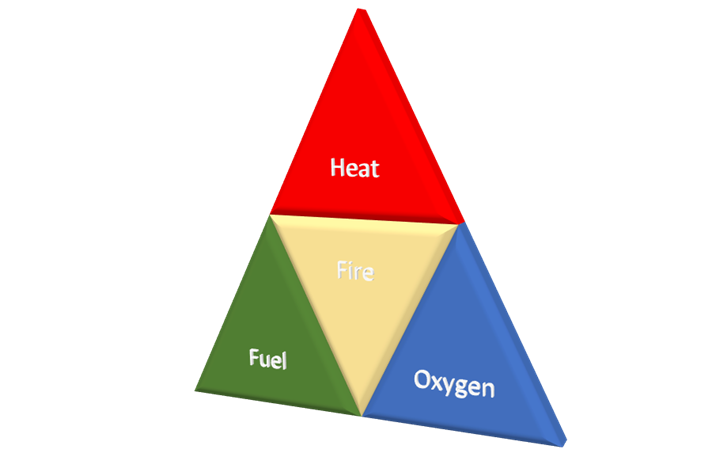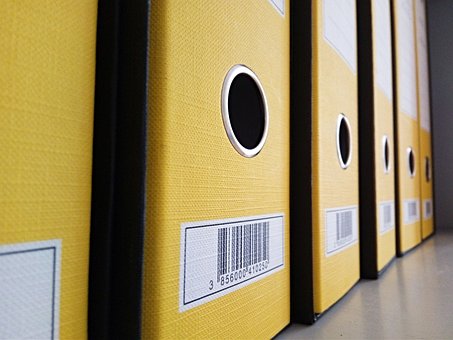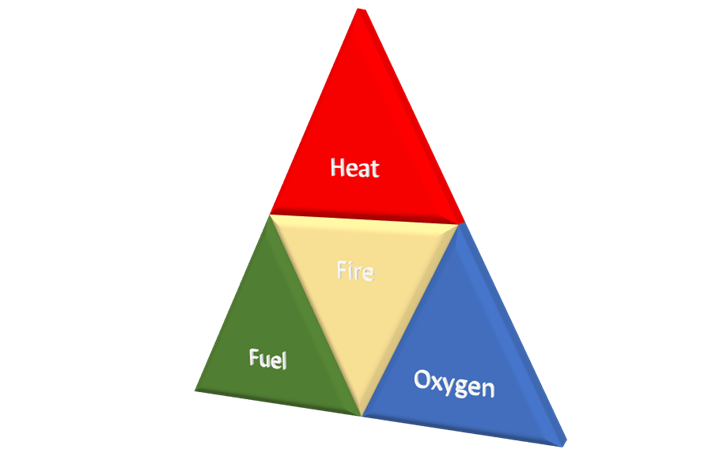Summary
Housekeeping can be described as ‘the art of ensuring that everything has a place and there is a place for everything.’ If this simple rule is followed, then it can be said a tidy workplace is a safe workplace. Conversely, poor housekeeping can adversely affect efficiency, productivity, and quality. It can also be responsible for many avoidable accidents in the workplace.
Slips and trips are one of the most common causes of accidents in the workplace (in 2019/20 they accounted for 29% of total injuries in the workplace) and are largely caused by poor housekeeping, people tripping over poorly stored objects, slipping on wet, unclean, damaged surfaces. It is for this reason the HSE make slips and Trips one of their priority topics.
Incorrectly stored work items/equipment/tools can cause all manner of hazards:
- Cross contamination – Liquids, powders and other products if spilt or leaking can contaminate other solutions/products. It is important to understand the correct storage technique for each item, what it can be stored with and what it should be kept away from e.g., products containing bleach and ammonia, if mixed can produce a highly toxic, life-threatening gas. Information can be found on the product safety data sheet.
- Fire hazard – Flammable products should be stored in small quantities and in a flammable cabinet/bin (which should be constructed of fire-resisting material and designed to retain spills 110% volume of the largest vessel normally stored within). More information can be found here. Place rubbish in a suitable container and empty frequently. Be aware most fires are caused by arson, for this reason it is recommended external skips/bins are placed away from buildings.
- Falling objects – Items stored above ground level need to be stored in a way so they cannot fall and hit a person or become damaged or spill contents causing a further hazard.
- Musculoskeletal sprain and strains – If manual handling is required, store items at a suitable height e.g., heavy items at waist height, lighter items at ground level or higher if unavoidable. Items that may spill and cause harm should never be stored above head height.
- Obstructed walkways – ensure walkways are kept clear with no protruding object and enough space to pass and manoeuvre equipment safely.
- Trip hazards – poorly stored equipment, lose cables, uneven floor surfaces and poorly maintained surfaces can cause a trip hazards. Ensure floor surfaces are well maintained and kept clear.
- Slip hazards – wet floor surfaces and rubbish left on floor surface can cause slip hazards, ensure a cleaning regime is put in place to keep surfaces clean and dry. When found report it, do not leave it for the next person to slip on.
The list is almost endless, only once you have surveyed your own workplace will you identify all the hazards caused by poor housekeeping.
Five S’s
Many systems exist to help with this topic. One method used to keep on top of housekeeping in the workplace is the use of the Five S system; Sort, Set in order, Shine, Standardise, Sustain.
Sort - Distinguish between necessary and unnecessary items. Remove the latter. If you are not sure store those ‘unsure’ items away from the workplace if possible.
Set in order - Enforce the maxim ‘a place for everything and everything in its place.’ Storage places can be marked or named. Frequently used items can be brought to the front for ease of access.
Shine - Clean up the workplace and look for ways to keep it clean. Floors and surfaces can only be cleaned when you can see them. Cleaning tools and machinery before returning to its storage place should become normal behaviour.
Standardise - Maintain and monitor adherence to the first three Ss. Create working standards e.g., before putting the tool away ensure it is clean and you put in the designated space. If something is not right deal with it immediately.
Sustain – Maintain discipline and commitment. Conduct checks to measure compliance. Hold the good behaviour aloft and create good habits.
Each of the above flow into each other, so if you are adhering to one of the Ss you are likely to be adhering to the previous one. Often space is at a premium, this can make good housekeeping more important and beneficial, the above system can help make best use of that space.
FIRE
Fire is a real threat, not only to life but also livelihood. Fire can cause personal harm which understandably can be devastating. Fire can also damage property which is not only expensive to repair but can also cause significant disruption for you and your organisation.
Grounds maintenance sheds and machinery are particularly high risk and need to be included in the fire risk assessment. This guide looks at what you should be covering in the context of grounds management within your wider cricket club fire risk assessment.
All fire is avoidable
How do fires start?
To understand how to avoid fire it would first be useful if you understood what conditions need to be present to allow a fire to start and for it to continue burning.
Below is a diagram of the ‘Fire Triangle’. Simply put, for a fire to exist it needs a Heat source to cause ignition, a source of Fuel to burn and Oxygen to allow combustion. Remove any one of these elements and the fire will not start, nor will it continue to burn.

Fuel = anything that will burn – chemicals, gas, wood, furniture even some metals.
Heat = anything that provides a temperature high enough via radiation, convection, or conduction to cause combustion of any given fuel source (some fuels burn at low temperatures).
Oxygen = almost continuously present unless special circumstances prevail. Note: Sometimes an oxygen rich environment may exist, in such a case the risk of fire is increased.
How are fires prevented?
Fires are prevented by having a system in place that not only identifies what could cause a fire but also by having systems in place to proactively prevent those conditions from existing, referred to as a ‘Fire Safety Strategy’. This strategy would include, but not be limited to:
- Fire prevention – Identify all the hazards, how a fire might start and put in place fire prevention controls.
- Fire detection – Early detection can provide a timely warning; it can also allow for early suppression preventing extensive property damage.
- Warning/Alarm – Giving people time to evacuate safely.
- Evacuation/means of escape – Ensuring a safe route is maintained from all parts of the building.
- Fire suppression – Can provide a means of delaying the spread of fire and also the means of fighting the fire.
Fire safety risk assessment
If you are in control of a premises, then you are responsible for fire safety in that premises, this starts with a fire safety risk assessment.
A fire safety risk assessment is the first step in your fire safety strategy and follows the same 5 principles as a normal risk assessment, it simply focuses on fire risk.
- Identify the Hazards - who might be harmed and how by fire related hazards.
- Assess the risk - gauge the likelihood of a fire occurring and what the severity of injury might be. A combination of the two will give an idea of the level of risk.
- Control the risk - put in place measures that as far as is reasonably practicable controls the risk of fire to an acceptable level. Your control measures must include safe evacuation from fire. As mentioned, it is recognised you may not always be able to totally eradicate the risk, but you must reduce risk to an acceptable level.
- Record your findings - write it down.
- Review your controls – periodically revisit you risk assessment to ensure all remains relevant.
When identifying hazards think of the Fire Triangle, heat, fuel, and oxygen. As we can’t eradicate oxygen, concentrate on identifying sources of heat and fuel and when they might come together, be it intentionally or by accident. Then look at suitable control measures that should primarily prevent fire and then if a fire should break out how to detect, warn and evacuate safely. A short guide to making your premises safe from fire can be found here.
If you have grounds-sheds, then heat might come from recently used machinery (engines/exhausts) or friction tools such as grinders/pillar drills. Fuel might be flammable chemicals, stored items (packaging/fuel), waste materials etc. Poor housekeeping often represents a fire hazard in all kinds of locations.
A comprehensive guide to Fire Safety Risk Assessment can be found here, and a Fire Risk Assessment Template can be found here
Additional considerations
Fire Detection and Alarm
While not mandatory, if dictated by your fire risk assessment it is highly recommended that you have a suitable fire detection system and an effective method of raising the alarm. If you are occupying a small single-story premises an automated detection and alarm system may not be necessary as you will be able to see the fire/smoke and shouting FIRE, FIRE, FIRE, would be an acceptable way of raising the alarm. If you are occupying a more complex premises, say one with more than one floor then a detection/alarm will be required (seek competent advice). Remember if you do have a fire detection/alarm system then it must be properly maintained and regularly tested.
Means of escape
You must provide suitable and safe means for escape. Distance to the place of ultimate safety and number of people will need to be considered and will be determined by risk assessment. The route needs to be signed and well lit, especially if occupied during the dark hours. This may require emergency lighting. Ideally doors along the route should open in the direction of travel, no door should be locked unless as per the final exit have a quick release ‘push bar’ opening system.
Internal fire suppression
Internal fire suppression can give you valuable extra time to aid safe evacuation. This can be achieved by using fire doors to achieve fire compartmentation (holding the fire in a specified area while evacuation is achieved). Fire extinguishers can be used as a form of fire suppression, if used training will be required. If modifying a building, Building Regulations will need to be adhered to. Seek competent advice.
External fire risk
Ensure your risk assessment considers the likelihood of harm to others e.g., if a fire might spread externally to other buildings. This may be via roof voids to attached buildings or via airborne sparks.
Access
Ensure ease of access to the building and its grounds for the fire services should they need to fight a fire. Can they get close enough to the building, is clear access to fire hydrants and rising fire mains maintained, ensure they are clearly marked, and no obstructions are likely?
Communication & Training
Ensure you clearly communicate your fire safety strategy to all occupants. This might be via signage, notices, and training. Those who have specific duties must have received suitable and sufficient training.
Storage of flammable liquids
Storage of flammable liquids present a particular hazard. If you use petrol/diesel powered machinery then you are likely to be storing flammable materials, even if you are storing it in the vehicle’s fuel tank. Other flammable liquids might include, solvents, cleaning fluids, glues etc, items can easily be identified by the flammable decal on the packaging.
Depending on the quantities being stored and the result of your fire risk assessment will determine how and where you store your flammable liquids.
If you store large quantities, these are best stored outside, away from buildings and secure from tampering. Sometimes buildings can be purpose built or modified to store flammable liquids. If this is the case guidance must be sought as special considerations need to be taken when modifying and existing buildings for this purpose.
Most flammable liquids are likely to be stored in small quantities and in containers no larger than 20lts. It is acceptable to store these quantities inside and even in workplaces, so long as it has been risk assessed and controls are in place e.g., stored away from heat sources, not on or close to a fire evacuation route or near electrical appliances etc. Flammable liquid storage cabinets are made available specifically for this purpose and are designed to be secure, fire retardant and contain spillages within. Note: flammable cabinets must be provided with a bund large enough to retain 110% of the largest container held within, so if your largest liquid container is 20lts the bund must hold in excess of 22lts.
In summary
The above information should be used as guidance only. The linked documents provide more detailed information on the topic of fire prevention and should be referred to. The more complex your organisations buildings the more complex the controls required. It is strongly recommended competent advice be sort when developing your Fire Safety Strategy.
Irrespective of the type of building occupied the following steps needs to be taken:
- Risk assess and control the risk by providing
- fire prevention
- fire detection
- means of raising the alarm
- means of escape
- fire suppression
- means of contacting the emergency services
- provide training to those with specific duties.
- Record your findings and communicate them to all who use the building
- Periodically revisit your risk assessment
- Insure against loss from fire
Fire prevention and control is a complex topic, it is strongly advised you get advice from a competent person.



 Tweet
Tweet